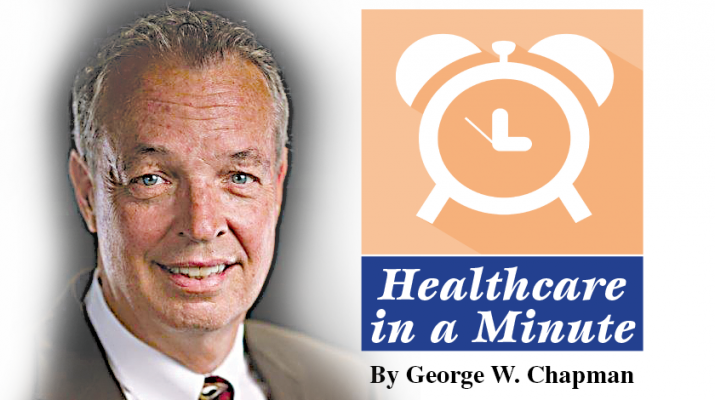By George W. Chapman
These are bills sent to you by providers who, unbeknownst to you, are non-participating providers in your insurance plan. They can send you a bill for the difference between their charge and what your insurance company paid them. (Participating providers contractually agree to accept your insurance payments.) A typical example would be when you receive services from a participating hospital emergency department only to learn when the bill arrives (surprise!) that the emergency department is staffed by a national MD group that doesn’t accept nor participate in your insurance. The obvious question is, why would a participating hospital staff its ED with non-participating providers? The answer is they may not have much of a choice, especially if it’s a hard-pressed rural hospital that cannot maintain its own staff. A rare bipartisan bill coming out of the Senate health committee deals with surprise bills. It would require all providers that work for an “in network” hospital to accept a patient’s insurance. In this ED example, the national MD staffing group company must agree to become participating providers or agree to send their bill directly to the hospital vs. the patient.
Price Transparency
The same bill that addresses “surprise” billing also addresses price transparency. It would require providers and insurers to give patients price quotes on expected out-of-pocket expenses so consumers can shop around. It would require insurers to keep up-to-date directories so patients know what providers are in network in the first place which would virtually eliminate surprise bills. It would also ban anti- competitive language in contracts between an insurer and a healthcare system that prevent patients from seeking lower cost/higher quality providers.
JAMA and Single Payer
For the first time in a long time, JAMA (Journal of American Medical Association) published an opinion piece supporting the concept of a single payer for healthcare. Recent surveys and polls reveal half of physician respondents now support the concept of a single payer system for healthcare. This was not nearly the case 20 years ago or so, when commercial payers paid physicians considerably more than Medicare for the exact same service. Over time, commercial insurance companies gradually lowered their fees to the equivalent of Medicare fees, or close to them, causing a lot of physicians to wonder what’s the point of the administrative hassle created by multiple payers if all are now paying about the same as Medicare. The Medicare physician fee schedule, once derided as a necessary evil by physicians, has become the “gold standard” of all physician fees. By dropping their fees to Medicare equivalents, commercial carriers have unwittingly created the case/justification for a single payer system. Despite the rationale, physicians remain justifiably wary of a single payer that would have a monopoly on their fees. To counter, the idea of a physician’s union has been floated.
Advantage Plans
Medicare Advantage (MA) plan applications were up 87% the first quarter of 2019 vs. the same period last year. MA plans are administered by commercial carriers like Aetna, Excellus, Cigna, United, etc. They typically charge a small premium more per month than regular Medicare because they offer more benefits. The typical MA “premium” decreased this year from $12 to $8 a month. Industry experts believe the price drop is due to competition, increased efficiency and tech savvy baby boomer consumers. Seniors are free to move back and forth between regular Medicare and MA plans during annual open enrollment periods. People who switched from traditional Medicare to an Advantage plan spent/cost an average of $1,253 per year less (2016 versus 2015) than those remaining on traditional Medicare.
ACA Best Year Ever
Despite more than 60 attempts to repeal the Affordable Care Act and continuing efforts to scuttle the ACA by the current administration, the insurers still offering individual plans on the exchanges are not only surviving but are thriving. They are experiencing their best year ever. As some major carriers either scaled back or completely exited the exchanges, primarily due to the uncertainty created by Washington, other carriers took advantage of the void and either newly entered the market or expanded their existing footprint. The Kaiser Family Foundation looked at insurer performances between 2011 and 2018. In 2015, there was an average loss of $9.21 per member per month for all participating insurers. The corresponding “medical loss ratio” was 103%, meaning the insurer spent 3% more on claims than it made in premiums. In 2018, the insurers made an astounding $166.82 per member per month. The corresponding medical loss ratio was an industry enviable 70% meaning the average insurer spent 30% less on claims than it made in premiums. The ACA requires a small market insurer to refund money to its members when their medical loss ratio is under 80%. Stated another way, insurers can keep up to 20% of their premiums, but must refund anything over that. All told, insurers will refund about $800 million to members.
CVS Health Hubs
As further evidence of the expansion and encroachment of retail corporations into the provision of healthcare, CVS announced it will increase its community-based hubs by 1,500 locations over the next two years. Twenty percent of a CVS store will be dedicated to these “HealthHUBs” that will provide “new product categories, digital tools, on-demand health kiosks, trusted advice and personalized care.” CVS argues it is fulfilling unmet consumer preferences and is keeping up with competitors like Walmart.
George W. Chapman is a healthcare business consultant who works exclusively with physicians, hospitals and healthcare organizations. He operates GW Chapman Consulting based in Syracuse. Email him at gwc@gwchapmanconsulting.com.

